
Superconductivity
Scope & Guideline
Advancing the frontiers of superconductivity research.
Introduction
Aims and Scopes
- Superconducting Materials Research:
The journal covers the synthesis, characterization, and optimization of various superconducting materials, including high-temperature superconductors (HTS) and low-temperature superconductors (LTS), with a strong emphasis on improving their properties for practical applications. - Device Engineering and Applications:
Research on the design, fabrication, and performance evaluation of superconducting devices such as magnets, transformers, and quantum circuits is a core focus, highlighting the practical applications of superconductivity in technology. - Numerical Modeling and Simulation:
The journal frequently publishes studies involving numerical modeling and simulations to predict the behavior of superconductors under various conditions, aiding in the understanding of complex phenomena such as AC losses and flux dynamics. - Experimental Techniques and Innovations:
Innovative experimental techniques for measuring and characterizing superconducting properties are explored, including advances in measurement methods and device configurations that enhance performance. - Environmental and Societal Impact:
Research addressing the role of superconducting materials and technologies in combating climate change and improving energy efficiency is increasingly included, reflecting a growing awareness of the societal implications of superconductivity.
Trending and Emerging
- High-Temperature Superconductors (HTS):
There is a notable increase in research related to high-temperature superconductors, particularly REBCO (Rare Earth Barium Copper Oxide), focusing on improving their performance through innovative fabrication techniques and material enhancements. - Quantum Computing and Information Technology:
Emerging themes in superconductivity research include the development of superconducting qubits and other quantum information technologies, reflecting the growing interest in quantum computing as a transformative area of research. - Energy Applications and Sustainability:
Research that explores the application of superconductivity for energy-efficient solutions, including superconducting cables and fault current limiters, is trending, particularly in the context of renewable energy integration and smart grids. - Advanced Characterization Techniques:
The use of advanced characterization methods, such as magneto-optical imaging and high-resolution microscopy, is becoming more prevalent, allowing for deeper insights into the microstructural properties of superconducting materials. - Nanostructured and Composite Superconductors:
There is a rising interest in the development and characterization of nanostructured and composite superconductors, which shows promise for enhancing critical current densities and overall performance in practical applications.
Declining or Waning
- Low-Temperature Superconductors:
Research focused solely on low-temperature superconductors, such as NbTi and Nb3Sn, appears to be waning, as the field increasingly shifts towards high-temperature superconductors due to their greater potential for practical applications. - Fundamental Theoretical Studies:
While theoretical studies remain important, there seems to be a decline in purely theoretical papers without experimental validation, as the journal emphasizes applied research and practical outcomes. - Traditional Applications:
Topics related to traditional applications of superconductivity in niche areas, such as specific medical imaging techniques or older superconducting technologies, are less frequently observed, indicating a shift towards more contemporary and versatile applications. - Single-Component Superconductors:
Research focusing exclusively on single-component superconductors (e.g., pure elemental superconductors) is diminishing, as the trend moves towards composite materials and heterostructures that can enhance performance.
Similar Journals

Journal of Superconductivity and Novel Magnetism
Transforming Ideas into Innovations in MagnetismJournal of Superconductivity and Novel Magnetism, published by SPRINGER, is a premier venue for research in the dynamic fields of condensed matter physics and materials science. With an ISSN of 1557-1939 and an E-ISSN of 1557-1947, this journal provides an essential platform for disseminating innovative studies examining the complexities of superconductivity and magnetic phenomena. The journal is recognized for its contributions, holding a Q3 quartile ranking in both condensed matter physics and electronic, optical, and magnetic materials as of 2023. With a commitment to rigor and relevance, it features research that breaks new ground in understanding the properties and applications of superconducting materials, aiming to bridge fundamental science with technological advancements. Despite its lack of open access, the journal remains pivotal for researchers, professionals, and students keen to stay abreast of cutting-edge developments in the field, making it an indispensable resource for cultivating knowledge and promoting collaboration.
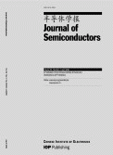
Journal of Semiconductors
Shaping the future of electronic, optical, and magnetic materials.Journal of Semiconductors, published by IOP Publishing Ltd in the United Kingdom, is a leading scholarly journal that has established itself as a premier platform for disseminating high-quality research in the fields of condensed matter physics, electrical and electronic engineering, and materials chemistry. Since its inception in 2009, the journal has featured research articles that delve into the fundamental and applied aspects of semiconductor technologies, making significant contributions to advancements in electronic, optical, and magnetic materials. The journal boasts an impressive Q1 ranking in several categories, including Condensed Matter Physics and Electronic, Optical and Magnetic Materials, reflecting its influential role in shaping contemporary research. With a dedicated audience of researchers, professionals, and students, it aims to foster collaboration and innovation in this dynamic field. Although it operates under a traditional access model, the journal offers various publication options that ensure the visibility and impact of its articles. Through its rigorous peer-review process and commitment to excellence, the Journal of Semiconductors continues to be an invaluable resource for those seeking to stay at the forefront of semiconductor research and technology.
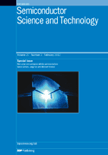
SEMICONDUCTOR SCIENCE AND TECHNOLOGY
Illuminating the future of electronics with groundbreaking insights.Semiconductor Science and Technology is a pivotal journal in the fields of condensed matter physics, electrical and electronic engineering, and materials science, published by IOP Publishing Ltd. With an ISSN of 0268-1242 and an E-ISSN of 1361-6641, this esteemed journal has been disseminating groundbreaking research since 1986 and is set to continue through 2024. Recognized in the latest categorizations, it holds a notable Q2 ranking in Condensed Matter Physics, Electrical and Electronic Engineering, and Materials Chemistry, alongside a Q3 ranking in Electronic, Optical, and Magnetic Materials, highlighting its significant contribution to the advancement of these disciplines. Although it does not operate under an open access model, the journal provides critical access options for researchers and professionals seeking to foster innovation and collaboration within the semiconductor community. As a vital resource, Semiconductor Science and Technology not only supports the dissemination of high-quality research but also serves as a platform for emerging trends and developments that are shaping the future of semiconductor technology.

Condensed Matter
Bridging Ideas in a Dynamic Scientific LandscapeCondensed Matter is a leading open-access journal dedicated to the diverse and dynamic field of condensed matter physics, published by MDPI since 2016. With its base in Switzerland, the journal aims to present a platform for researchers and professionals to share innovative findings and advancements in areas such as electronic, optical, and magnetic materials. As of 2023, it is ranked in the Q3 category for both condensed matter physics and electronic, optical, and magnetic materials, a testament to its relevance and growth within the scientific community. Researchers will find valuable insights through its accessible format, fostering collaboration and knowledge dissemination within this interdisciplinary field. With a commitment to enhancing the global dialogue in condensed matter studies, Condensed Matter invites contributions that explore theoretical and experimental approaches, thus pushing the boundaries of understanding in this crucial area of science.

SEMICONDUCTORS
Unveiling the mysteries of magnetic materials.SEMICONDUCTORS, published by PLEIADES PUBLISHING INC, is a prominent journal that provides a platform for researchers and professionals in the fields of Atomic and Molecular Physics, Condensed Matter Physics, and Electronic, Optical and Magnetic Materials. With an ISSN of 1063-7826 and an E-ISSN of 1090-6479, the journal has been diligently disseminating knowledge since its inception in 1996 and continues to pave the way for innovative research until 2024. Although currently unclassified in the Open Access model, its influence is underscored by its rankings in Scopus, where it ranks in the 21st-22nd percentile across critical scientific categories. SEMICONDUCTORS serves as an essential resource for cutting-edge research, fostering a greater understanding of semiconductor materials and their applications, thereby assisting the scientific community in pushing the boundaries of technology and innovation.
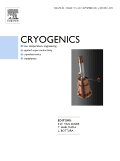
CRYOGENICS
Advancing the Science of Supercooling.CRYOGENICS, published by Elsevier Science Ltd, is a highly regarded journal dedicated to the dynamic field of supercooling and cryogenic engineering. With its ISSN 0011-2275 and E-ISSN 1879-2235, the journal features a diverse array of topics encompassing both Materials Science and Physics and Astronomy, as evidenced by its 2023 Q2 ranking in both categories. With a history spanning over six decades, from 1960 to 2024, CRYOGENICS serves as a vital resource for researchers, professionals, and students interested in the latest advancements in cryogenic technologies. Although it operates under a subscription model, the journal is recognized for its scholarly contributions and rigorous peer-review process, effectively disseminating knowledge that informs industry practices and academic research alike. By navigating complex phenomena at low temperatures, CRYOGENICS plays a crucial role in propelling innovations across multiple disciplines, making it an essential publication for anyone engaged in this captivating field.

Applied Science and Convergence Technology
Unleashing Potential at the Intersection of Science and EngineeringApplied Science and Convergence Technology (ISSN: 2288-6559) is a premier academic journal published by the Korean Vacuum Society, dedicated to advancing knowledge in the intersecting fields of condensed matter physics, electrical and electronic engineering, materials science, and theoretical chemistry. Based in South Korea, this journal serves as an essential platform for researchers, professionals, and students seeking to explore innovative applications and methodologies that drive convergence in science and technology. With a convergence period spanning from 2019 to 2024, the journal aims to publish high-quality original research and review articles that foster collaboration and knowledge sharing across disciplines. Its current quartiles position in top categories, alongside a respectable rank in Scopus, highlights its significance within the scientific community, although it is presently classified within lower tiers. The journal's commitment to open access ensures that vital research findings are accessible to a global audience, facilitating advancements in science and technology. As a notable outlet in its field, Applied Science and Convergence Technology continues to attract contributions that not only challenge current paradigms but also pave the way for future innovations.
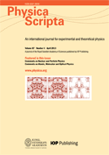
PHYSICA SCRIPTA
Innovating Insights in Atomic and Molecular PhysicsPHYSICA SCRIPTA, established in 1970 and published by IOP Publishing Ltd, is a prestigious journal dedicated to the broad fields of physics, encompassing topics such as atomic and molecular physics, condensed matter physics, and mathematical physics. With an impressive commitment to advancing scientific knowledge, it holds a significant standing in the academic community, evidenced by its Q2 and Q3 rankings across various categories in 2023. The journal is instrumental for researchers, professionals, and students seeking to disseminate and engage with high-quality research, fostering collaboration and innovation within the field. Although it currently does not offer open access options, its robust editorial standards ensure the dissemination of impactful studies, contributing to its rising citation metrics. Published from the United Kingdom, PHYSICA SCRIPTA continues to be a vital resource for contemporary developments in physics, paving the way for future discoveries.

Materials Letters-X
Driving Progress in Mechanical Engineering and BeyondMaterials Letters-X, published by ELSEVIER, is an esteemed open-access journal dedicated to the rapid communication of research in the fields of Condensed Matter Physics, Materials Science, Mechanical Engineering, and Mechanics of Materials. Launched in 2019, this journal has quickly established itself within the academic community, achieving Q3 quartile rankings in several categories according to the 2023 metrics. The journal's impactful contributions are reflected in its Scopus rankings, notably within Mechanical Engineering (Rank #308) and Mechanics of Materials (Rank #199). The open-access model promotes widespread dissemination and accessibility, ensuring that cutting-edge advancements in material science are readily available to researchers, professionals, and students worldwide. As it continues to grow, Materials Letters-X aims to inspire innovation and collaboration across disciplines, making it a pivotal resource for those engaged in material research and applications.
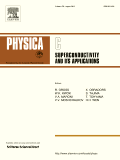
PHYSICA C-SUPERCONDUCTIVITY AND ITS APPLICATIONS
Driving Insights in Condensed Matter PhysicsPHYSICA C-SUPERCONDUCTIVITY AND ITS APPLICATIONS, published by Elsevier, stands as a pivotal journal in the fields of Condensed Matter Physics, Electrical and Electronic Engineering, and Energy Engineering. With its inception dating back to 1988, the journal has successfully established itself as a key platform for disseminating high-quality research and innovative applications related to superconductivity and its diverse technological implications. Although it currently does not offer open access options, the journal maintains a respectable Q3 quartile ranking in multiple categories as of 2023, indicating its continued relevance and impact within the academic community. Researchers, professionals, and students alike benefit from its insights, as it features peer-reviewed articles covering the latest advancements and theoretical breakthroughs in superconductivity. As it converges towards the end of its operational span in 2024, this journal continues to stimulate valuable dialogue and foster collaborations that push the frontiers of knowledge in this exciting and rapidly evolving domain.